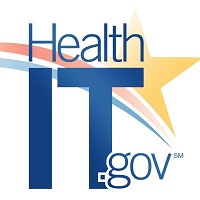 By Brittney Boakye, Allison Dennis, Kevin Chaney, Tracy Okubo &
By Brittney Boakye, Allison Dennis, Kevin Chaney, Tracy Okubo &
Teresa Zayas Cabán, ONC
Twitter: @ONC_HealthIT
Does the neighborhood I live in affect my health? How am I going to be able to see the specialist without a car? Can I share blood pressure and blood sugar readings I take at home with my doctor so she can monitor how I’m doing? These critical questions have helped to drive precision medicine research as well as improving care management and coordination.
While researchers and providers seek to capture and integrate insightful patient data from non-clinical settings and understand how social and environmental issues impact health, challenges remain. An explosion of digital health technologies using competing and asynchronous standards makes data integration at scale difficult. Efficiently collecting and securely integrating social determinants of health (SDOH) data – similar to the challenges of using data from wearables, sensors, and mobile apps – as part of the clinical workflow continues to lag. As a result, informative health data from outside clinical settings is decoupled from clinical data, impeding researchers’ and clinicians’ ability to glean new insights and provide more comprehensive care.
Advancing Standards for Precision Medicine (ASPM)
The Advancing Standards for Precision Medicine (ASPM) project was established to enable the collection and sharing of high-impact data found outside the care system through standards development and testing. ONC undertook two demonstration projects to investigate and inform the collection and use of mobile health, sensor, wearable, and SDOH data. Today, ONC published a new ASPM report that shares insights and results from these two demonstration projects. The final report is available on HealthIT.gov [PDF – 2.5 MB].
Mobile Health, Sensors, and Wearables
As mobile health, sensors, and wearables have become increasingly popular among individuals, the healthcare industry has been rapidly adopting the Health Level Seven International (HL7®) Fast Healthcare in Interoperability Resources (FHIR®) specification to meet interoperability needs. With this in mind, the ASPM Mobile, Health, Sensors, and Wearables demonstration project aimed to implement the FHIR Application Data Exchange Assessment Framework and Functional Requirements for Mobile Health Implementation Guide (“framework and implementation guide”) that was developed by the ASPM project team to capture mobile health, sensor, and wearable data.
Real-world testing of the framework and implementation guide was carried out by the Reliant Medical Group in Worcester, Massachusetts for two use cases: patients diagnosed with COVID-19 and patients diagnosed with congestive heart failure. Patients were provided a device for monitoring their vital signs that, using a mobile app, communicated results to their electronic health record (EHR) and their clinical care team conformed to the framework and implementation guide for standardized data collection.
Additional testing of the framework and implementation guide was performed in a production environment using synthetic patient data between Get Real Health®, a patient engagement app, and athenahealth, a health information technology developer. The demonstration shared synthetic data that simulated COVID-19 risk factors as measured by consumer devices with EHRs.
Social Determinants of Health
Despite the impact SDOH has on patient outcomes, there are notable gaps in efficiently capturing relevant information from patients and sharing it with provider organizations in a standardized format. The Integrating the Healthcare Enterprise Assessment Curation and Data Collection (IHE ACDC) profile was created to capture SDOH data through assessments and questionnaires and was tested at Fenway Health in Boston, Massachusetts, in partnership with athenahealth and the University of Washington.
Fenway Health used a questionnaire to capture and transmit patient response data, including patients’ housing, living conditions, transportation, and food security. These data were captured using the IHE ACDC profile and transferred to the EHR in HL7 FHIR format, which allowed the results to be easily shared with the provider. This project accomplished the demonstrated use of the IHE ACDC profile in collecting SDOH data and its potential for future use in patient care and research.
Future Opportunities for Standards Development
The demonstrations provided insights into the challenges associated with the collection and sharing of certain types of health data, but also brought forward potential solutions to be considered for future work. Those solutions include developing an initiative to encourage consumer device manufacturers to adopt the use of standards like HL7 FHIR and improving collaboration across standards development organizations to integrate SDOH and data from personal/mobile devices with health IT.
We are excited about the progress that has been made to capture and integrate patient data to help improve patient care and health and look forward to further advancing the standardized collection of high-impact health data.
This post was originally published on the Health IT Buzz and is syndicated here with permission.
